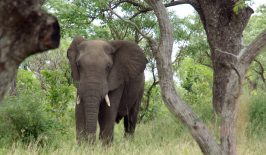Researchers at the University of Oslo in Norway are currently working on building up a vast biobank of cell material in order to provide the necessary blueprints for future lab-grown meat production, as well as the conservation of critically endangered animals.
The idea was originally developed by stem cell researcher Dr Gareth Sullivan to act as a kind of cellular ‘Noah’s ark’ for species on the verge of extinction. Dr Sullivan, who previously worked as part of the Dolly the Sheep cloning team, started out by creating the stem cells of the northern white rhinoceros, a sub-species of rhino which currently consists of only two living females – making the species functionally extinct.
The hope was that this genetic material could one day be used to essentially resurrect extinct animals – quasi-Jurassic Park style – by removing the nucleus from a preserved cell of an extinct species and inserting it into the egg of a closely related living one. The process is, naturally, fraught with many complications, although a breakthrough occurred in 2009 when scientists were able to impregnate domestic goats with genetic material from the extinct Pyrenean ibex. Unfortunately, the resulting foal died due to birth defects, but the study was hailed as major step in the de-extinction of certain species.
However, soon after starting the biobank, Dr Sullivan began receiving calls not from de-extinction researchers, but from companies working in the emerging field of cultured meat production – the growing of synthetic meat in a laboratory environment. This led Dr Sullivan to further develop his project into the so-called ‘Frozen Farm’, a repository of farm animal cell material to be used by artificial meat producers.
No Animals Were Harmed In The Making of This Burger
The field, which is still in its infancy, could have major repercussions for the global food industry, as meat products are grown in a laboratory environment, without the need for a live animal. It has been suggested this synthetic meat could beneficially impact the environment in several ways, such as cutting down on the space needed to cultivate herds of animals, reducing the greenhouse footprint of the industrial meat sector, and also improving on animal welfare standards. Persuading the public lab-grown meat is just as good as the traditional stuff, however, could be more challenging, with critics also highlighting lab-grown meats potential negative impact on the job market.
Despite this, Dr Sullivan’s idea generated enthusiasm amongst experts, winning the University of Oslo a 220,000 EUR prize grant. As the first centralized biobank of its kind in the world, it is hoped his team’s work could help to speed up and economise research into the creation of synthetic meats. Currently, most cultured meat producers create their cell lines from scratch, with Dr Sullivan explaining that most do not possess the knowledge or ability to create stem cell lines directly from animals other than primates.
Sullivan’s team, however, is able to do just that, and been developing a kit to be sent to farmers across Europe to harvest genetic material. This material can be extracted from the ear tagging of domestic animals, a common practice by which identification chips are inserted into animal’s ears. This activity results in a few millimeters of biological material, which is usually discarded by farmers, but is invaluable to Sullivan’s project.
From these samples, his laboratory can develop induced pluripotent stem cells (iPSCs), which have the ability to replicate indefinitely and could therefore be used as a never-ending starting point for synthetic meat. Most cultured meat producers grow their products from adult animal stem cells, which have a limited number of divisions and must be renewed over time. Dr Sullivan hopes his approach will help streamline the process, driving down costs and the complexity of developing cultured meat.
The expense of developing lab-grown meat is currently one of the major hurdles for producers, especially if they wish to rival cheap factory farmed meat. Luckily, according to Dutch animal nutrition company Nutreco, prices are dropping. In 2013, it took 215,000 GBP to grow a single synthetic burger – today, that cost is only around 8 GBP. They expect commercialisation of the concept to kick-off around 2020.
Dr Sullivan hopes to establish 18 brand new cell lines over the next 18 months to provide the basis for his Frozen Farm. It is hoped the interest in his biobank from synthetic meat producers will lead to additional funding which can also be used to support his conservation efforts. Although, Dr Sullivan’s work could provide a safety net for those species facing extinction, a much more positive – and most likely cost effective – means of conservation, would be to ensure they do not become extinct in the first place.






